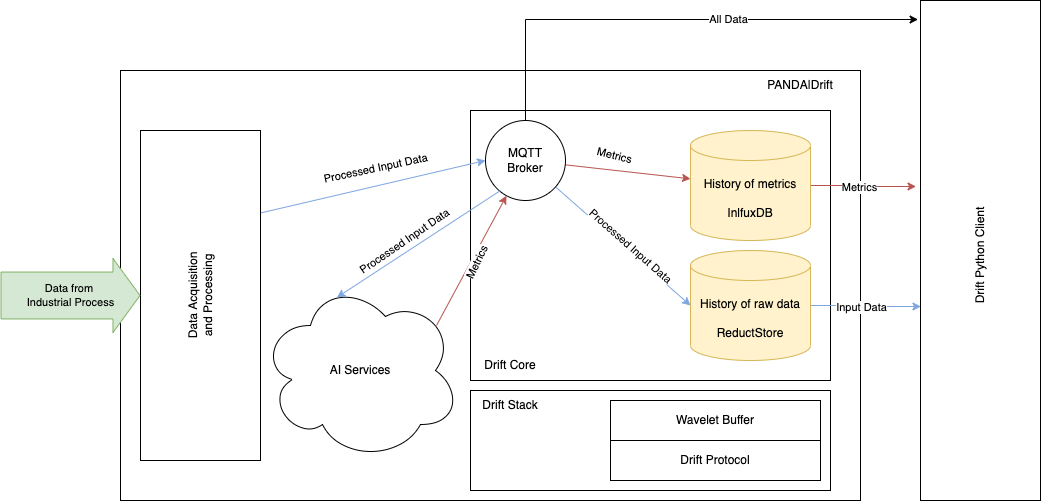What is PANDA|Drift?¶
PANDA|Drift is a platform to bring AI applications into industrial environments, which provides the following features:
Data Acquisition
The platform uses microservices to gather data from different data source. For example, the data source could be an OPCUA or MODBUS server of an automation system, a vibration sensor or a CV camera.
Data Processing
AI applications need AI-ready data. PANDA|Drift converts all data into a unified format, denoises and compresses it. Check out our open-source library WaveletBuffer to see how we do this.
Data Storing
The platform stores a history of input data and results of AI algorithms, so that they can be used for model training or validation and data visualization.
AI Application Server
An AI application can be easily integrated into PANDA|Drift infrastructure as a microservice by using MQTT and DriftProtocol
Architecture¶
PANDA|Drift has a fine-grained microservice architecture. However, here is an overview using high level components:

Our core technology is the MQTT protocol for real-time communication between microservices. The Data Accusation layer collects data from data sources, denoises and compresses it by using WaveletBuffer, then wraps the data into DriftProtocol and sends it via MQTT, so that all other parts of the system can use it.
The AI Services process the input data and provide metrics as results. They could be anomaly scores, coordinates of detected objects etc.
As you may notice, we have two types of data: processed input and metrics. Drift Core keeps a history for both of them, but it does it differently for both and for different purposes:
- Metrics are results of work of an AI application and this is data that users usually need. To store it, we use InfluxDB and keep data for long term storage.
- Input Data are mostly needed for training and model validation. We store it short term as blobs and provide HTTP access to it.
Integration¶
To extend systems based on the platform or integrate them into a third-party infrastructure, we developed Drift Python Client and made it available as an open-source library.